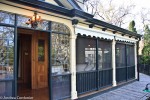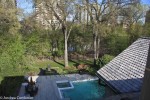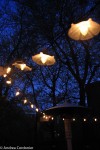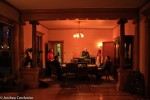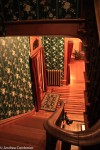A natural park formed by a bend of [the] Assiniboine River, which surrounds it on three sides, preventing encroachment and overcrowding, well sheltered by fine timber, rich soil sloping south, excellent drainage…wide boulevards…less than two miles from centre of the city, comprising the choicest residential property and the pretties gardens and lawns in the city.
– A sales ad for Armstrong’s Point land, J.R, Wagnorn, Osler, Hammon & Nanton, Winnipeg (Legislative Library of Manitoba, Manitoba Free Press, 6 Aug 1904 p. 2)
He told me he had been pushed down the stairs by a ghost. Sleepless, he got up in the middle of the night and promptly ended up in a heap at the bottom. I climbed the stairs myself last night and, although I didn’t experience any malevolent presence, I can confirm their aggressive pitch. He was lucky to end up only bruised and sore.
Today he confessed a frayed carpet was really to blame. But that doesn’t change the fact that shadowy shapes slip past him sometimes. She’s seen them, too, inside and out. A black-robed woman moves between the kitchen and the bathroom and hovers outside the bay window. After so many lives pass through them, old houses often take on a life of their own.
Officially it was the Arthur Francis Eden Residence but everyone called it The Pagoda. The house was completed in 1882 and Eden, with his wife Frances, turned it into the social centre of Winnipeg.
Tonight it is a social hub again, albeit on a smaller, barbecue-sized scale. A great pleasure to make a lovely trip into the past with such agreeable company.
Reference: Armstrong’s Point: A History by Randy R. Rostecki (The Heritage Winnipeg Corporation 2009)
The Heritage Winnipeg Corporation 2009


